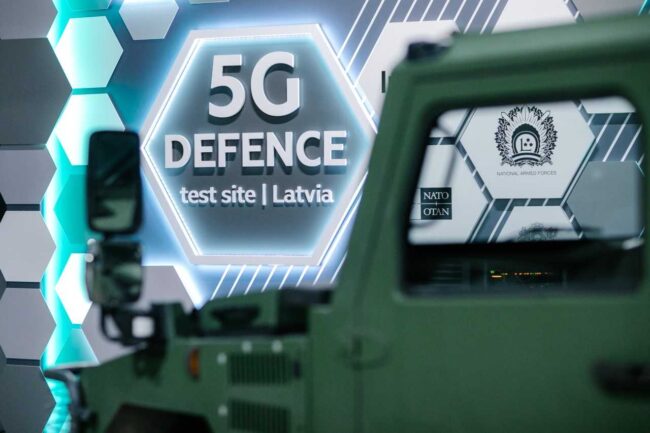
Nokia and Ericsson have added their 5G networks to Europe’s first 5G defense testbed, in Latvia, making it possible to test defense systems on a variety of communication networks, according to telecommunications company LMT, which set up the test site in 2020 in cooperation with Latvia’s military.
“5G networks promise a wide range of technological data delivery opportunities, which can significantly impact many industries, including the civil and defense sectors. To make them a reality, a strong collaboration must be established between 5G network infrastructure providers, mobile operators, user equipment manufacturers, use case developers, and end clients,” Armands Meirāns, the innovation test lead at LMT, said in a statement. “We are thrilled that we are able to host all of the above in the development of Latvia’s 5G military testbed. We are equally thrilled to have the world’s leading 5G network infrastructure providers—Nokia and Ericsson—participate in our [research and development] activities.”
The site is open to NATO allies to jointly develop, test and demonstrate 5G uses for defense, and hosts 5G capabilities as well as proximity to a defense training area, air force base, military camp and coastline. NATO, the U.S. Department of Defense, the European Defence Fund and the European Defence Industrial Development Programme have tested there, including for unmanned ground vehicles, LMT said.
Adding two new standalone 5G networks is the next step in developing the functionality of the testbed, the company said, as it allows for the centralized testing of defense technology on various networks, possibly speeding their implementation to the field.
Implementing foundational 5G technology in Latvia’s world-class testbed will help fast-track military innovations by testing them in this real-world, collaborative environment,” Philippe Agard, head of Nokia’s defense business, said in the LMT statement. “We are delighted to support LMT in this initiative with our private 5G stand-alone network to advance next-generation defense applications.”





